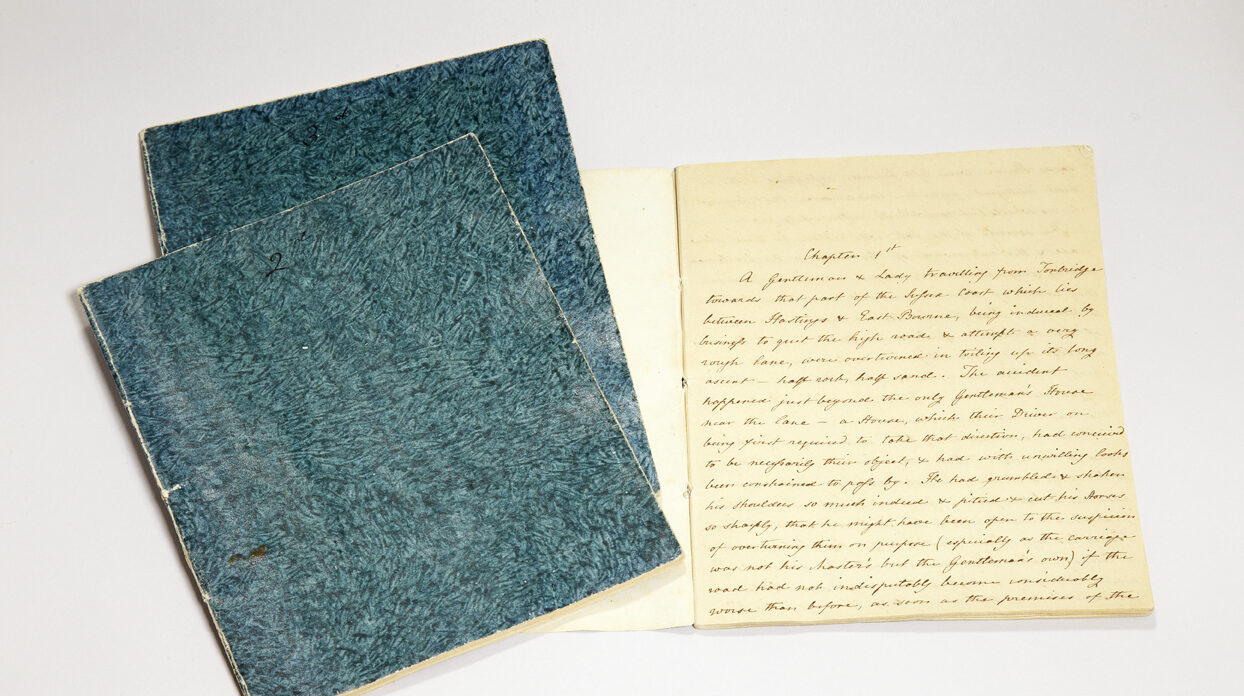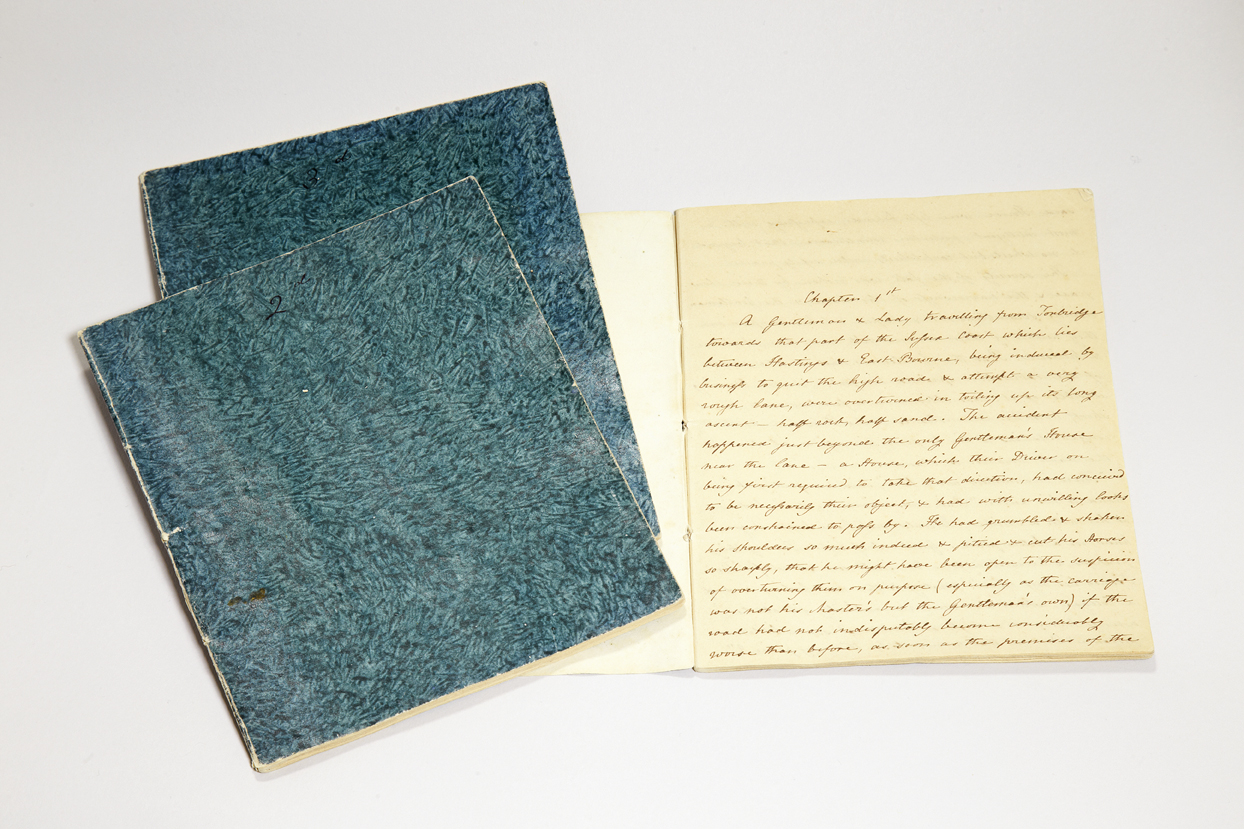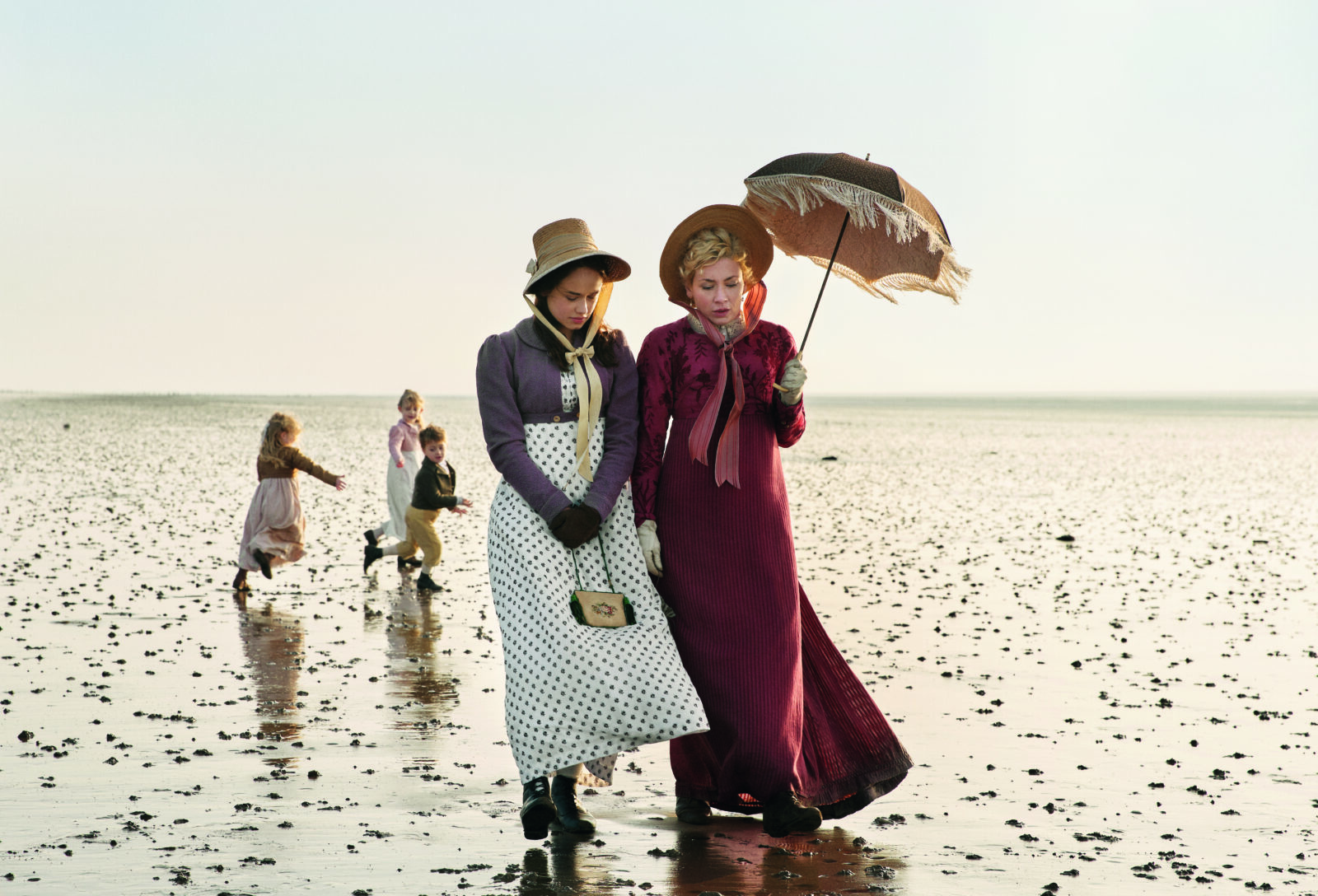A brief history of Sanditon
As we celebrate the reopening of the Museum, complete with a new exhibition showcasing our fair copy of Sanditon, we look back on the history of Jane Austen's last, unfinished novel.The opening chapters of Sanditon, written in the first few months of 1817, are a precious, tantalising and frustrating fragment. They represent what could have come next, had Jane Austen survived her fatal illness. They are the beginning of a new story, a departure from the rural village settings of the earlier novels, stepping (or even diving) into new waters – an aspiring seaside resort full of cliffs, dunes, beaches and of course the sea itself.
A passage in which the dashing Edward Denham speaks of the sea seems to describe all the drama, flux and excitement of a thrilling novel:
‘The terrific Grandeur of the Ocean in a Storm, its glass surface in a calm, its Gulls and its Samphire, and the deep fathoms of its Abysses, its quick vicissitudes, its direful Deceptions, its Mariners tempting it in sunshine and overwhelmed by the sudden Tempest’.
This is a wilder, riskier setting than we are used to, and the themes in Jane’s fledgling chapters suggest a novel that, if completed, could have been much starker and less elegantly coated than its predecessors – dealing in health and paranoia, entrepreneurship, ambition, avarice and frenzied building developments.
But Jane Austen only completed the first 11½ chapters, so where there might have been a wild, deep, surprising novel, we have a puzzle. We have characters and setting, but no real idea of plot. We do not know where it was going, or how much of what was written would have been cut or changed.
However, as a consolation for the fact that it was not finished, we do have the manuscript – a jumping off point for Austen studies, as so few of her mature manuscripts survive. According to the custom of the time, once a novel was in print, the manuscript was not kept. The bits and pieces of Jane Austen’s manuscripts that survive are therefore those that never made it into print – the teenage stories, unpublished or abandoned middle works, and this last, unfinished novel.
Let us therefore look at the manuscript in more detail. It consists of around 24,000 words, contained in three small, handmade gatherings. These are made of ordinary writing paper, cut down and folded to form booklets. The manuscript is closely written in brown iron gall ink, with long passages of smooth flowing, uncorrected or minimally corrected prose, interspersed with more densely worked and reworked sections. The hand is clear, neat, and controlled. Notes on the manuscript record that Jane began writing the novel on 27 January 1817 and left off on 18 March – presumably due to her illness, although no sign of physical deterioration is detectable in the manuscript itself.
On Jane’s death these three booklets passed to her niece Anna Lefroy, and then down through her family line to Mary Isabella Lefroy, Jane Austen’s great-great niece. She presented it to King’s College, Cambridge, in October 1930. Today, it can be seen online.
Here at Jane Austen’s House, we are lucky enough to hold a second copy of the manuscript, written out by Cassandra, Jane’s devoted sister, friend and helpmeet, at some point after Jane’s death. Like the original, this fair copy was written out in three booklets, although these are shop-bought, larger and thinner, with patterned green covers, rather like modern school exercise books. A watermark on the paper dates this copy no earlier than 1831. Cassandra’s copy was passed down through her brother Frank’s family line to Janet Austen (later Sanders), another of Jane’s great-great nieces. Today, it lives in the collection at Jane Austen’s House.
Both copies of the manuscript are untitled. According to family tradition, Jane herself referred to the work as ‘The Brothers’. However, this may not have been her intended title for the published novel. Sanditon seems to have been an unofficial title used within the Austen family at least from the mid-nineteenth century.
The story itself was first alluded to publicly in 1871, when James Edward Austen-Leigh included a précis and quotations from the manuscript, under the title ‘The Last Work’, in the second edition of his Memoir of Jane Austen. However, it was not until 1925 that it was published in full, under the title Fragment of a Novel, edited by R. W. Chapman. A paper facsimile edition of Jane’s manuscript was published in 1975, with an introduction by B. C. Southam.
From very early in the manuscript’s history, other authors have sought to complete it. The first was Jane’s niece Anna Lefroy, who inherited the manuscript and wrote her own continuation of the story, although like her aunt she also left it unfinished. Her manuscript was written at some point between 1845-1860, but was not seen publicly until 1977 when it came up for auction. It was published in 1983. Alongside Anna, many other writers have tried their hand at either completing or rewriting Sanditon over the years, from Alice Cobbett’s Somehow Lengthened. A Development of “Sanditon” (1932) to Marie Dobbs’ Sanditon by Jane Austen and Another Lady (1975), and even Reginald Hill’s murder-mystery take on the story A Cure for All Diseases (2008).
The most recent, and arguably the most magnificent, continuation is Andrew Davies’ TV dramatisation which premiered in 2019. Having used up the entirety of Austen’s fragment in the first episode, this 8 episode miniseries ran wild with an extravagant plot, featuring sex, nudity and incest. It split viewers and critics, and created an international super fan group that successfully campaigned for a second (and third) series, which is expected to air in 2022.
As we reopen Jane Austen’s House after a long, difficult year, we are celebrating by putting Cassandra’s fair copy of the manuscript on display in our newly created Courtyard Gallery, as part of a mini exhibition devoted to Jane Austen and the seaside. And as we dream of holidays this summer, we’ll be returning to those wonderful opening chapters, meeting again with Charlotte Heywood, Mr and Mrs Parker, Lady Denham, Clara Brereton and Sidney Parker… and travelling again to Sanditon, that most salubrious of seaside resorts which, today, has at last made a name for itself.
‘but Sanditon itself—everybody has heard of Sanditon,—the favourite—for a young and rising Bathing-place, certainly the favourite spot of all that are to be found along the Coast of Sussex—the most favoured by Nature, and promising to be the most chosen by Man.’


